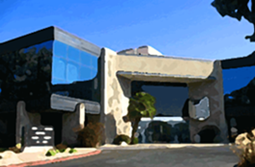Community Development | FAQ
Community Development Block Grant (CDBG)
What kinds of projects will CDBG fund?
- Eligible projects include public improvements such as parks, streets, community centers, drainage structures and others.
- CDBG can also fund housing development, residential rehabilitations, economic development and public services that directly relate to housing or physical community revitalization.
What are the eligible areas for County CDBG funds?
- CDBG funds can be used to benefit residents of the unincorporated county and the six participating cities of Coronado, Del Mar, Imperial Beach, Lemon Grove, Poway and Solana Beach.
What is the process to receive CDBG funds?
- Each fall, we release the current application and information about the process.
Who can submit a CDBG application?
- Non-profits, Community Organizations, County Departments, and Public Residents.
*If you are applying as a resident, please consult with HCDS staff or email Marco De La Toba at (Marco.Delatoba@sdcounty.ca.gov) to set up consultation. Resident Request applications are not intended to be awarded to private residents for projects or services, but rather may be used as a mechanism for private residents to initiate projects or services that they see as valuable in their community but will be completed or delivered by a public entity or tax-exempt non-profit organization.
What projects are ready to receive CDBG funding?
- Applicant’s project should be in a position to be completed within 12 months
- Projects that tie back to one of our FY
2020-2024 Consolidated Plan Goals and align with the Board of
Supervisors’ goal of advancing economic and racial equity by
prioritizing the needs of vulnerable communities in our region.
Consolidated Plan Goals include:
- Increasing affordable housing opportunities.
- Enhancing community infrastructure.
- Preventing and ending homelessness; and
- Providing housing and support for individuals with HIV/AIDS.
HOME Investment Partnerships Program (HOME)
What is the HOME Investment Partnerships Program?
- These are federal funds that are available for low-interest loans to nonprofit and for-profit developers of affordable housing. The HOME program provides the funds to local governments based on a formula for increasing housing for persons with incomes at or below 80% of the Area Median Income (AMI) Chart).
What can be done with HOME funds?
- Eligible projects include property acquisitions and rehabilitations for non-profit and for-profit developers, new construction, assistance to homebuyers such as help with down payment and closing costs, relocation and special-needs-tenant rental assistance.
Who can apply for HOME funds?
- Eligible applicants include nonprofit and for-profit housing developers and other nonprofit organizations sponsoring affordable housing activities.
How do I know when HOME funds are available?
- We publish announcements called Notice of Funding Availability (NOFA) when the moneys are offered.
Emergency Solutions Grant
What is the purpose of the ESG program?
- The Emergency Solutions Grant (ESG) is designed to be the first step in a continuum of assistance to prevent homelessness and to help homeless people move toward safe and healthy living.
- ESG funds can be used by emergency shelter operators and other service providers for activities such as street outreach, homelessness prevention, rapid re-housing and data collection.
Housing Opportunities for Persons with AIDS
Is there a special program for serving people with AIDS?
- Yes, Housing Opportunities for Persons With Aids (HOPWA) may provide resources and incentives to create housing and support services for people with human immunodeficiency virus (HIV) and acquired immunodeficiency syndrome (AIDS) or related diseases, and their families.
- Housing and service providers compete for these funds through a Notice of Funding Availability (NOFA) application process.
Developer Incentives and NOFA
What is NOFA?
- NOFA stands for Notice of Funding Availability. We use this process to let affordable housing developers know there is funding available that may provide gap financing at below-market rates.
What is the Density Bonus Program?
- The Density Bonus Program allows housing developers to build more units on a property than are otherwise permitted as long as a certain percentage of the additional units are reserved for low- or moderate-income households.
- For more information on the program, please see County Planning and Development Services Density Bonus FAQs (PDS-338) or call (858) 694-3656.
What other low-cost financing programs are available for low-income housing development?
-
Low-Income Housing Tax Credit (LIHTC) Programs
The California Tax Credit Allocation Committee (CTCAC) administers the federal and state Low-Income Housing Tax Credit programs. Both programs were created to encourage private investment in affordable rental housing.
- Learn more: California Tax Credit Allocation Committee
Housing Successor Agency
Are there any Housing Successor Agency (formerly Redevelopment Agency) projects?
- San Diego County has two project areas: The Upper San Diego River Improvement Project Area (USDRIP) and the Gillespie Field project Area, which focus on the promotion of private-sector investment and development in these areas.
- A status update has been prepared for the two housing successor agency assets of the former County Redevelopment Agency, which was dissolved on February 1, 2012. See the Fiscal Year 2022-23 SB341 Compliance Reports.









